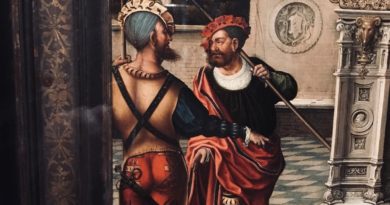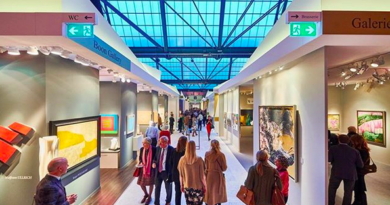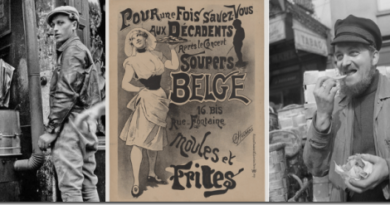Brussels Hidden Gems: Petit Sablon Square
As we approach International Workers’ Day, it seems only right to visit a corner of Brussels dedicated to tradespeople. Petit Sablon Square, south-east of the Church of the Blessed Lady of Sablon, is a small rectangular park, designed by architect Henri Beyaert, on the site of the St John’s Hospital Cemetery.
Inaugurated in 1890, it is more modest in scale and less well known than its big sister Grand Sablon, from where the famous yearly Ommegang parade sets out. Still, size isn’t everything; Beyaert managed to pack 59 statues into Petit Sablon Square, 48 of which represent traditional professional guilds.
The garden’s symmetrical layout is neo-Renaissance in style but, seen in birds’ eye view, seems beautifully typical of Brussels, like an Art Nouveau keyhole perhaps, or a ladies’ dressing table. Stroll around the perimeter and gaze upon bakers, cabinet-makers, cobblers, coopers, weavers, barbers, gilders, and millers. A visit to Petit Sablon Square is like a masterclass in the vocabulary of historic crafts.
Children (and adults), will have fun guessing which trade is which, using each statue’s clothing and tools as clues. The details are surprising and delightful. How would you tell the difference between a fresh-water fishmonger and a salt-fishmonger for example? Among the statues, you’ll even find Henri Beyaert himself. Can you guess which statue was modelled on his features? *Answer below!
At the park’s southern tip, above a round pool, stand the Counts of Egmont and Hornes, who were beheaded for their resistance to the Spanish in the 1500s. Their statue was moved from its original setting in Grand Place to this new home for the park’s inauguration.
The two rebellious counts are surrounded by contemporary ‘Belgian’ luminaries, including the mathematician, geographer, and astronomer, Mercator, who coined the term ‘America.’ These ten 16th century heavyweights make the Petit Square a must-visit for anyone playing ‘Name Ten Famous Belgians’. Don’t expect to find many women among the statues though – that’s a campaign yet to come.
*Answer: Statue number 1: for slate and stoneworkers, masons and sculptors.



